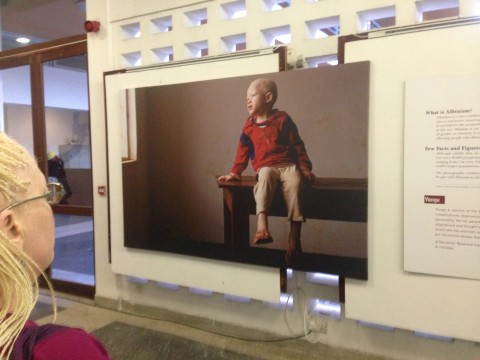The Tribe of Ghosts
Peaceful Tanzania rarely makes international headlines – except for the way people with albinism are treated.
A picture of a little girl, sitting on a bench. She closes her eyes against the sun shining from the window. The four-year-old has been abandoned by her parents because of her genetic condition, albinism. And in Tanzania, having albinism can be a death sentence.
Potions made out of limbs of people with albinism are often thought bring wealth or cure diseases. The gruesome results of the misconception are well-known. Body parts fetch high prices on the black market and are used in witchcraft rituals. Thus, people with albinism not only suffer discrimination but have been persecuted, dismembered and even killed. Between 2000 and 2014, the United Nations reported that the country had seen more than 150 cases of attacks.
The frequent attacks have led the government to place children and adults in various centers for their own safety, such as the Kabanga Protectorate Center, where the picture was taken. It is part of reportage by AP photographer Jacquelyn Martin and is currently exhibited at Dar es Salaams National Museum. The series is titled „Tribe of Ghosts“, as Tanzanians with albinism are often called zeru (roughly translates as „Ghost“).
At the opening ceremony – which I’ve covered for The Citizen – the various officials speaking all stress the importance of fighting the many misconception about people with albinism. The exhibition is not only supposed to raise awareness for their situation but show people with albinism as they are rarely seen in this country: Not as victims, not as ghosts, but as human beings.
Placing people with albinism in safe houses is an unsatisfying solution. Although physically safe, the residents are often isolated, cut-off from society, and with little long-term plans for the future.
“I truly believe this exhibition will make a difference”, says Jayne Waithera, one of the many persons with albinism present at the ceremony. The Kenyan woman is an independent contractor working for Under The Same Sun, a Canadian NGO dedicated to protect people with albinism. “Art has a special way of touching people”, she says. “I am convinced that these photographs will go a long way in diminishing the many prejudices there are against people with albinism.”
However, centers such as the Kabanga protectorate were originally supposed to be temporary and not as permanent homes, Waithea stresses. “The government needs a long-term strategy to bind practices that lead to killings and to try to reconcile persons with albinism with society.”
Medically, albinism is a defect of melanin production which results in little or no color in the skin, hair, and eyes. The rate of people with albinism is much higher in Eastern Africa than any other place in the world. Tanzania in particular is thought to have one of the worlds largest populations of people with albinism. The country has become notoriously famous for the frequent attacks on people with this condition.
Jacquelyn Martins portrait series can be found here.

Schreibe einen Kommentar